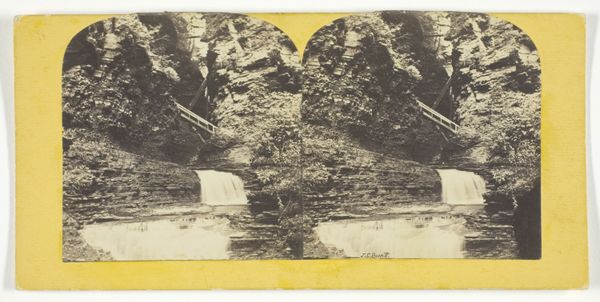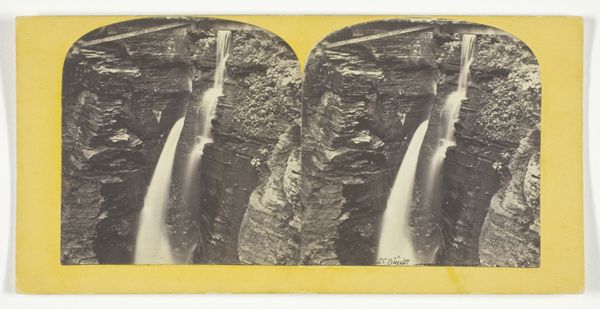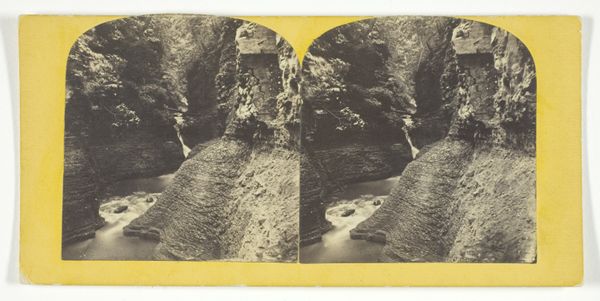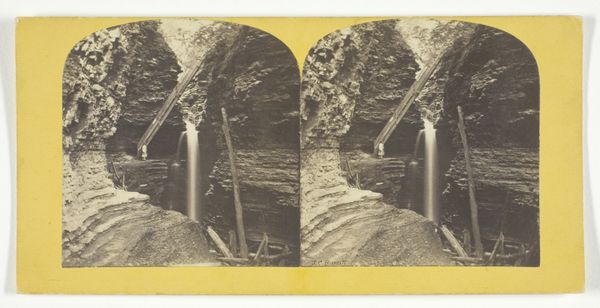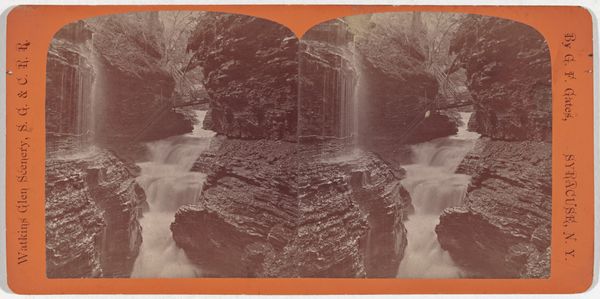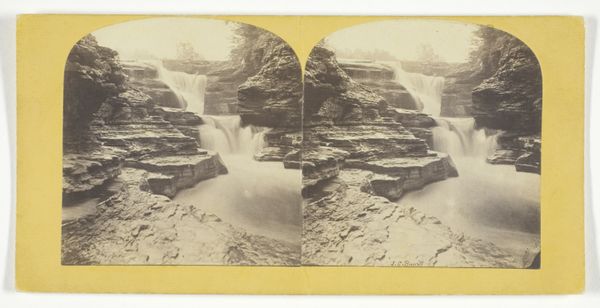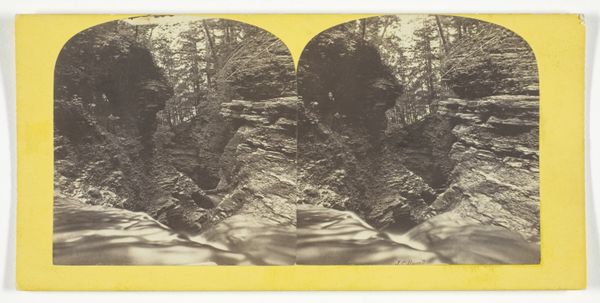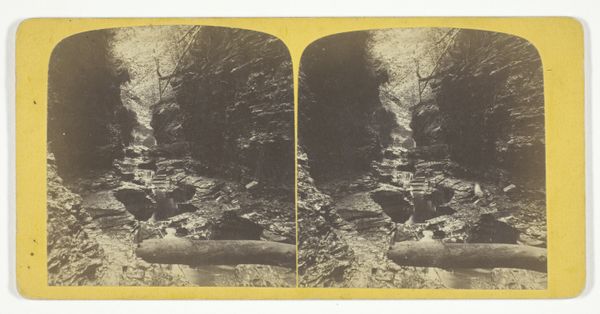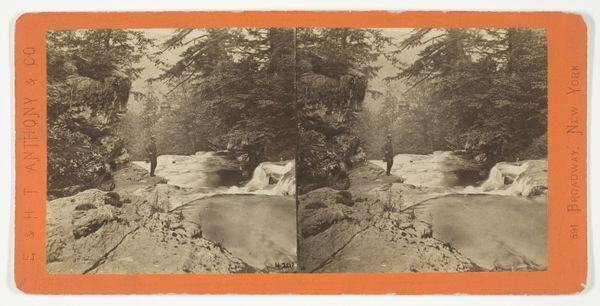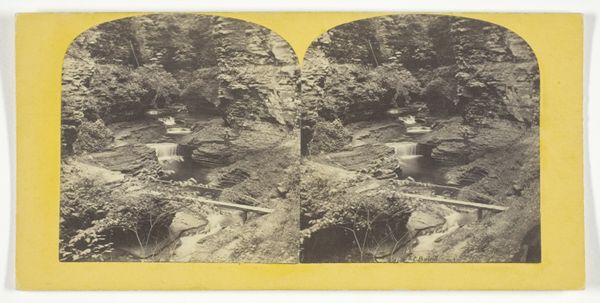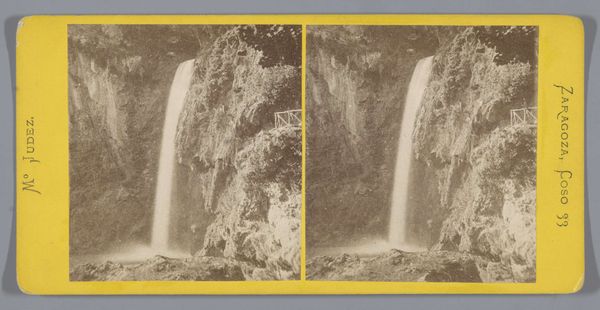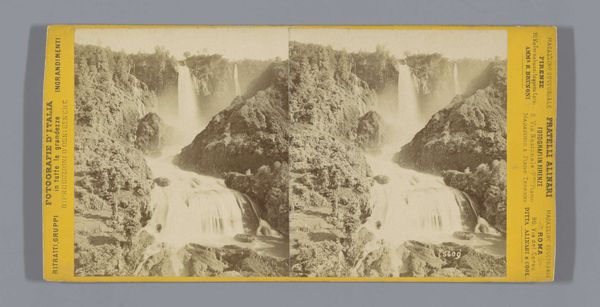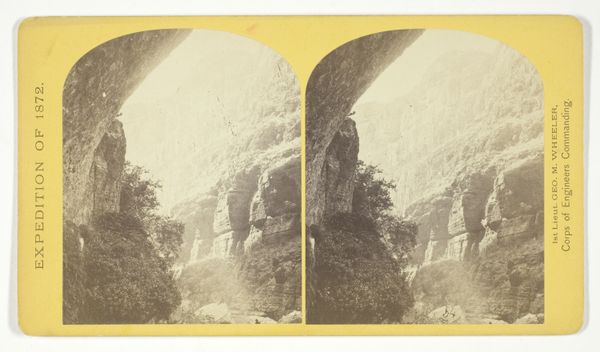
Freer Glen at Watkins Rainbow Falls and Triple Cascade 3rd Glen 1860 - 1865
0:00
0:00
silver, print, photography, gelatin-silver-print
#
16_19th-century
#
silver
# print
#
landscape
#
photography
#
gelatin-silver-print
#
hudson-river-school
Dimensions: 7.5 × 7.2 cm (each image); 8.4 × 17.1 cm (card)
Copyright: Public Domain
Editor: Here we have "Freer Glen at Watkins Rainbow Falls and Triple Cascade 3rd Glen," a gelatin-silver print by J.C. Burritt, made sometime between 1860 and 1865. It’s striking how the water dominates the composition, almost like a force of nature captured in a still frame. What can you tell me about this work? Curator: This image resonates with a powerful romantic ideal - the sublime. Can you see how the waterfall and glen function as symbols? Consider what water, as a recurring image across cultures, might signify. Editor: Renewal? Cleansing? It feels…almost biblical. Curator: Exactly! The rushing water could symbolize purification, the cyclical nature of life, a return to origins. The glen itself, a hidden space, suggests a sanctuary, a place apart from the everyday world. Notice the carefully placed wooden supports? What do they tell us? Editor: That humans have been here and tried to tame this place? Curator: Precisely. It creates a dichotomy: the wild, untamed nature versus the human attempt to control or access it. This interplay reflects a broader 19th-century fascination with both the beauty and the potential dangers of the natural world, linking back to a very potent dialogue of spirituality and manifest destiny. Editor: So, it’s more than just a pretty picture; it’s a cultural statement. I’ll never look at a landscape the same way. Curator: Indeed. Each element is loaded with symbolic weight. It invites us to ponder our relationship with nature and its profound impact on our cultural narrative.
Comments
No comments
Be the first to comment and join the conversation on the ultimate creative platform.
